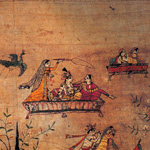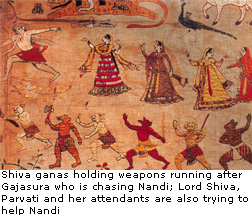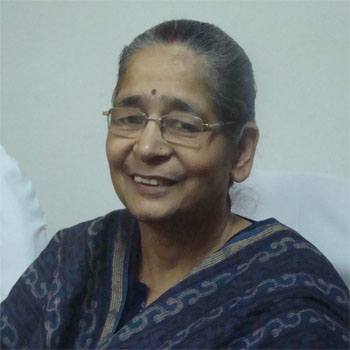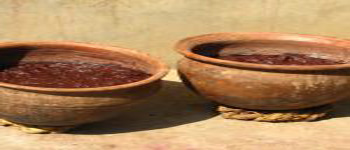
Art history/ Historiography, Craftspersons/ Artisanal, Museums/ Galleries / Collections / Exhibitions
A Unique Chamba Rumal on The Gajantaka Theme
Pathak, Anamika
August, 2012
Nataraia, Gajantaka, Bhairava, and Andhakantaka are popular ugra-rupas (ferocious forms) of Lord Shiva- the god of destruction in the main trinity of the Hindu pantheon. Discussions of these forms in the agama literature and the Shilpa-shastras inspired artists to create such forms in plastic art. Bhairava and Andhakantaka forms of Shiva are less depicted in art compared to his other two ugra-rupas. The most popular is Nataraja, which has been discussed in detail in the literature and also by contemporary art scholars. Gajantaka or Gajasurasamharmurti, is also popular. Some important multi-armed Gajantaka stone sculptures depicting Shiva in a ferocious mood holding several weapons are found in temples of north India (the National Museum has a 10th-century stone sculpture of the Pratihara period), others in Mysore and Tanjore in the south, and there is a bronze image from Valuvur temple of about the l3th-15th century. An 18th-century miniature painting of the Pahari school has also come to light, but the most exceptional discovery is an embroidered coverlet (rumal) from Chamba region, Himachal Pradesh, which is the subject of this article.

 The destruction of the demon Gaja by Lord Shiva is an extremely rare subject for coverlets of chamba. The most common subjects fou...
The destruction of the demon Gaja by Lord Shiva is an extremely rare subject for coverlets of chamba. The most common subjects fou...

 The destruction of the demon Gaja by Lord Shiva is an extremely rare subject for coverlets of chamba. The most common subjects fou...
The destruction of the demon Gaja by Lord Shiva is an extremely rare subject for coverlets of chamba. The most common subjects fou...
This is a preview. To access all the essays on the Global InCH Journal a modest subscription cost is being levied to cover costs of hosting, editing, peer reviewing etc. To subscribe, Click Here.



